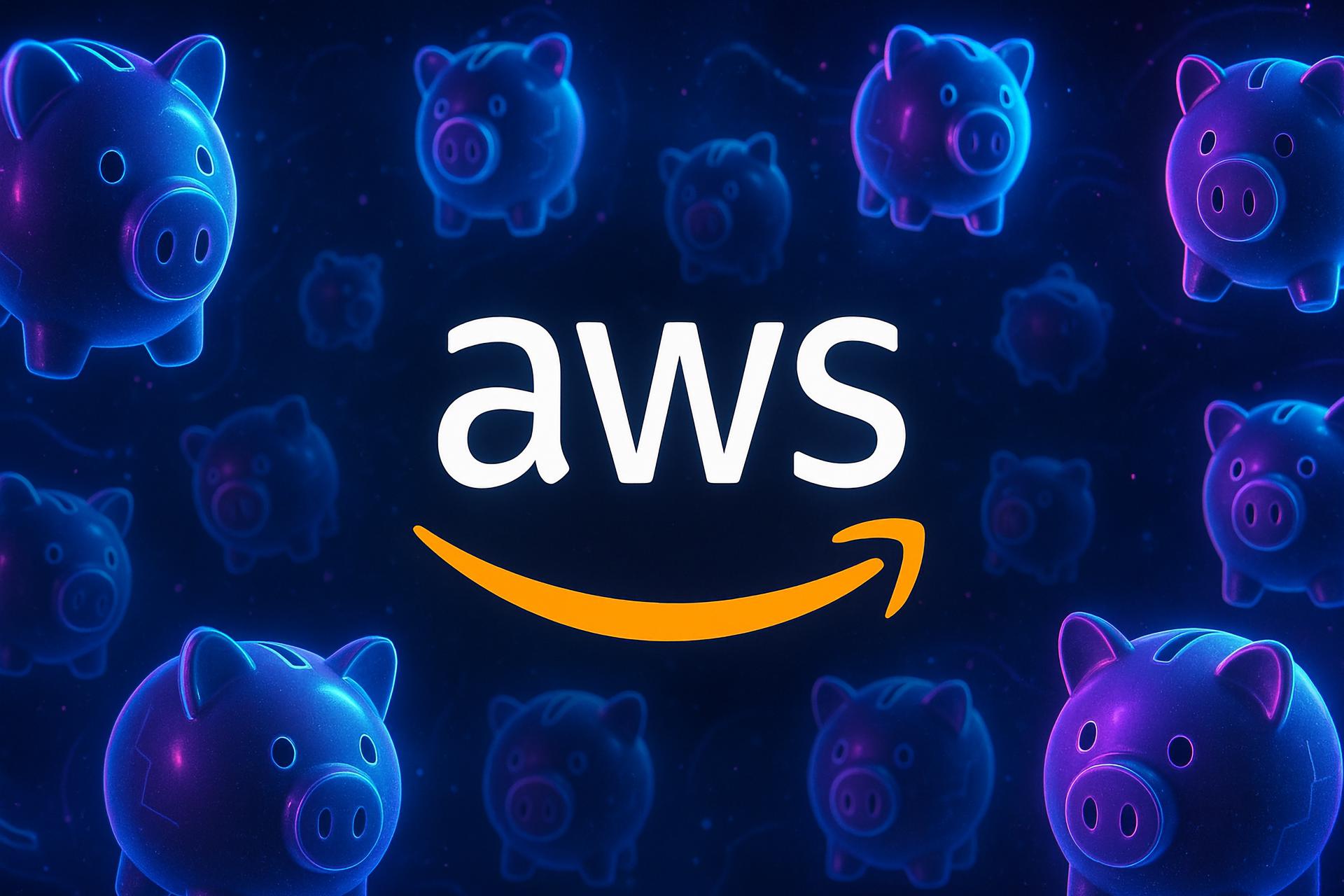In early 2024 Umbraco Commerce (UC) was a relatively new product. It provided features to build a storefront in Umbraco, but we soon discovered that using it was a rough ride. It had glaring bugs, an incomplete feature set, almost no documentation, and was Europe-focused. It was also expensive, especially considering that you have to build your own product browser and cart. Around that time Pentec Health asked us to add a store to the ZOIA Healthcare Umbraco website. Given the state of UC we decided to build our own solution tailored specifically for ZOIA and Umbraco.
The shopping experience is familiar and clean, offering a product browser with categories, pricing, images, and descriptions. Out of stock items are clearly indicated. Paging is used to allow for bookmarking specific filters. And search is centralized and global to the entire store. Visitors are instantly at home.
Viewing a product is also a familiar experience. Staples like product image, clear pricing, and description are front and center. One click add to cart and quantity choices are featured. And when a product is out of stock, authenticated users have the option to be notified when the product is back in stock.
Managing your cart is simple, and when you're ready to check out, the process is straightforward and focused on speed, using simple steps and minimal options. This is one of the reasons we chose to integrate with Stripe for payments. Their flow perfectly fits with our view of what a checkout should be.
And once the order is placed, customers can view the status and order history right from their profile.
The intuitive user experience also extends to the back office. Store configuration options are in one place, including Stripe integration settings, custom shipping methods, page assignments, and contact information. And shopping stages are used to segment orders making them easy to find and process. The stages of an order include: Shopping cart, Payment pending, Paid, Shipped, and Cancelled. Customers are notified of changes in order state so they're always up-to-date.
There is also a powerful coupon code system which allows managers to create a myriad of offers for customers, from simple discounts, to buy one get one (BOGO) specials, free item based on category/price/product, and more.
We also created a dedicated import/export and stock management feature. It allows store managers to export inventory and order data, as well as import current stock levels (replacing stock counts or adding more items) to make updating product availability across the entire store a quick and painless process.
ZOIA is also a premiere provider of renal support food products for local governments and organizations, so their store also has rich B2B support, allowing ZOIA to service various types of organization accounts, large and recurring orders, proxy ordering for organization members, invoiced and deferred payments, and more.
Visit the ZOIA Healthcare marketplace to check it out yourself. If you're interested in a storefront for your products (even if you're not using Umbraco), let us know. We can help!
There's usually more to the story so if you have questions or comments about this post let us know!
Do you need a new software development partner for an upcoming project? We would love to work with you! From websites and mobile apps to cloud services and custom software, we can help!
 You might need a hazmat suit to dispose of this battery.
You might need a hazmat suit to dispose of this battery.
Lithium-ion batteries are the predominant form of rechargeable battery and are commonly found in portable electronics as well as electrified transportation (Clean Energy Institute). In fact, the average person in the U.S. owns about nine lithium battery-powered devices. And 98% of those people use those devices daily (Recycling Today).
Why lithium? Most batteries today use lithium due to its high energy density, which averages 150-250 Wh/kg (watt-hours per kilogram), and its low self-discharge rate of around 2% per month. So essentially it stores a lot of power for its weight, and holds that charge for a long time.
Lithium Ion (Li-ion): common in laptops, smartphones, tablets, power tools, and EVs. These batteries typically last 500-1,000 charge cycles or around 3-5 years under normal use.
Lithium-Polymer (Li-Po): common in drones, RC vehicles, slim phones, and wearables because of their flexibility in shapes and sizes. These batteries typically last 500-1,000 charge cycles or around 3-5 years under normal use, but are more sensitive to overcharging, deep discharging, and swelling.
Lithium Iron Phosphate (LiFePO₄): common in solar storage, e-bikes, and some EVs. These batteries typically last 1,000-3,000 cycles (8-10 years). They are much safer and more stable than standard Li-ion batteries.
There are two main reasons to recycle or responsibly dispose lithium-based batteries, though they're not mutually exclusive. The first reason is battery aging. The signs that your battery is approaching the end of its normal lifespan include:
The battery discharges much faster than it used to.
It takes much longer to charge than normal, or won't fully charge.
The device shuts down unexpectedly even when the battery indicator shows a remaining charge.
The device overheats during normal use or charging (much hotter than it would get when new).
The second reason is safety concerns. The battery changes below are important safety concerns that you should not ignore. When any of these are the case, take action!
Swelling or bulging of the device or battery pack itself.
The battery is physically damaged (punctured, dented, crushed).
The device or charger warns you of battery issues.
The battery has been exposed to water or extreme heat.
The battery is leaking fluid or has unusual smells.
There are two great reasons to dispose or recycle batteries responsibly: safety and the environment. As you'll see below, lithium can be volatile and cause fires and explosions. It's also a toxic chemical that is bad for the environment when it leeches into drinking water, harms wildlife, and the like.
The following safety guidelines may be obvious, but it's critically important to mention them, regardless. Lithium is a high energy material that can be highly volatile under the right circumstances. So with that in mind...
DO NOT throw the device or battery in household trash; this can very likely cause a household or landfill fire.
DO NOT put the device or battery in curbside recycling; this can cause a fire or explosion in the recycling truck, and these recyclers don't handle battery recycling anyway.
DO NOT burn, crush, or puncture devices or batteries; this releases toxic gases and creates a real fire risk.
DO NOT store long-term if damaged; recycle as soon as possible. The longer you wait, the more likely the battery will leak or combust.
If you have a device or battery that needs to be recycled or responsibly disposed, follow the steps below to get it right and keep everyone safe.
Discharge if possible; drain it the device or battery down to around 20-30%. Do not try to fully discharge a damaged or swollen battery — just handle it carefully.
Protect the terminals; cover exposed battery terminals with non-conductive tape (e.g., electrical or packaging/box tape). This prevents accidental short circuits, which can cause sparks or fire. Some disposal services require that the device/battery be put into a plastic bag.
Handle swelling/damage carefully; if swollen, leaking, or punctured, place the device or battery in a fireproof container (metal box, sand, or cat litter in a plastic bag), and avoid pressing on it or trying to puncture it.
Federal law and low lithium reclamation costs have made it really easy to dispose or recycle a device or battery. Options include local drop-off and mail-in services. And they typically extend to other battery types, including car batteries!
Many electronics retailers (Best Buy, Staples, Home Depot, Lowe's, Batteries Plus, etc. in the U.S.) have battery recycling bins.
 These battery recycling bins are usually in the entrance or exit vestibule, or near the store's customer service desk.
These battery recycling bins are usually in the entrance or exit vestibule, or near the store's customer service desk.
Check your local waste authority for hazardous waste collection days or special drop-off sites. The EPA also provides tools for finding disposal locations (https://www.epa.gov/hw/lithium-ion-battery-recycling).
Some battery recycling services, like Call2Recycle in North America, provide prepaid shipping kits (https://www.call2recycle.org/). They will recycle the lithium safely, and properly dispose of the enclosure and other materials.
 Some retailers will accept packages on behalf of battery recycling services like Call2Recycle.
Some retailers will accept packages on behalf of battery recycling services like Call2Recycle.
Device makers like Apple, Samsung, and Dell, often accept batteries and old devices for free recycling. Some even offer store credit towards upgrading the device! Check their websites for details.
There's usually more to the story so if you have questions or comments about this post let us know!
Do you need a new software development partner for an upcoming project? We would love to work with you! From websites and mobile apps to cloud services and custom software, we can help!

The term AI is more of misleading brand name than an accurate description of technology. That distinction is causing real problems for people in many industries who increasingly rely on AI tools. One example of this is the case of Judge Julien Xavier Neals of the District of New Jersey, who had to withdraw his entire opinion after a lawyer politely pointed out that it was riddled with fabricated quotes, nonexistent case citations, and completely backwards case outcomes. You'd think that a judge would be more careful, but then again, if they're not tech-savvy you can see how they could be misled by the promise of AI.
In the 1983 movie War Games, a teenage computer whiz accidentally hacks into a U.S. military supercomputer (named WOPR for "War Operation Plan Response") while searching for video games, unknowingly triggering a potential nuclear crisis. As the system begins running a simulation it mistakes for a real attack, he must race against time to convince the AI to stop a global thermonuclear war.
So yeah, WOPR is what people today consider AI; artificial general intelligence (AGI) to be specific.
Released in 2008, the movie Iron Man features a billionaire inventor Tony Stark who was captured by terrorists, after which he builds a powerful armored suit to escape his captivity and later refines it to fight evil using a digital personal assistant named JARVIS (Just a Rather Very Intelligent System) to coordinate all his technology through voice commands.
JARVIS is also AGI.
OpenAI recently released ChatGPT 5 to mixed reviews. One such review was the blueberry test by Kieran Healy. He asked ChatGPT "How many times does the letter b appear in blueberry" to which ChatGPT responded "The word blueberry has the letter b three times". No matter how hard he tries to convince the AI that there are only 2 letter Bs in the word blueberry, ChatGPT is absolutely positive there are 3.
People expect and believe that AI has human-level or higher intelligence and is able to understand, learn, and apply knowledge in any domain, adapt to new problems, and reason abstractly. That would include knowing how to spell the word blueberry.
What we have with AI today is really a marketing issue. It is not a mechanical turk. It is a transformational technology and it's here to stay. It will improve over time, and it has the potential to make our lives better in many ways. But we need to understand what it is, and more importantly, what it is not.
Then what is AI?
Modern large language models (LLMs) like ChatGPT are trained on vast datasets covering a wide range of human-created content—from websites and books to transcripts, code, and other media. Instead of simply storing this data, the model uses neural networks to learn patterns in language, encoding knowledge as mathematical relationships. When generating responses, the LLM doesn’t look up answers in a database; it predicts the most likely sequence of words based on the context, drawing on statistical patterns it learned during training. LLMs operate through probabilistic prediction rather than direct retrieval, and they lack true understanding or reasoning in the human sense. Without ongoing training on the latest human-generated content, LLMs will become increasingly less useful.
So we're dealing with a simulated intelligence, not an artificial one. It's like the difference between precision and accuracy. You can be very precise, but completely wrong. So it does matter. There is no real intelligence at play here. Which is why the word blueberry has three Bs, the judge's opinion has non-existent citations, and glue was recommended by Google as the solution for making cheese stick better to pizza.
Once people really see that it's a simulation, albeit a very powerful and helpful one, responsible use of the technology will be far less of a problem.
There's usually more to the story so if you have questions or comments about this post let us know!
Do you need a new software development partner for an upcoming project? We would love to work with you! From websites and mobile apps to cloud services and custom software, we can help!

In today's fast-paced digital world, managing cloud costs has become a critical challenge for businesses of all sizes. With the sheer volume of services AWS provides, it can be difficult to keep track of spending and identify potential areas for optimization. That's where the recently launched AWS Cost Optimization Hub comes into play. It is a powerful tool designed to simplify cost management, drive savings, and give organizations the insights they need to maximize the efficiency of their cloud infrastructure.
“By using the AWS Cost Optimization Hub, organizations have the potential to save up to 30% or more on their cloud bill, real-world users have reported”
The AWS Cost Optimization Hub is a centralized platform within the AWS Management Console, under Billing and Cost Management, that provides customers with a simple, yet potent set of features to help identify and implement cost-saving measures across their AWS environments. It essentially aggregates all AWS cost optimization services into a single, user-friendly dashboard, and allows you to:
Identify underutilized resources: pinpoint instances or services that are being utilized and may no longer be needed.
Analyze spend patterns: gain visibility into your spending across accounts, regions, and services to spot trends and anomalies.
Implement recommendations: access automated, actionable recommendations that align with best practices for reducing unnecessary costs.
Explore pricing options: easily explore alternative pricing options like reserved instances or savings plans, which can provide significant discounts when you commit to long-term usage.
One of the best features of the AWS Cost Optimization Hub is how simple it is to get started. AWS has made it incredibly easy to enable the hub, even for users who are new to cost management.
If you're already an AWS customer, the Cost Optimization Hub is already available to you. All you need to do is log in to your AWS Management Console, navigate to the Cost Management section, and you'll see the Cost Optimization Hub option. No complex setup is required! So, with just a few clicks, you'll have access to your personalized cost optimization dashboard.
Is it really worth it? Yes! You can get significant savings with minimal effort using this AWS tool. But don't just take my word for it.
Below is an example based on one of our smaller client AWS environments.

They recently engaged us to begin the cost optimization process. And so far, just by using this tool, we were able to find almost 20% in savings. Although this does not represent all of the money saving/efficiency changes that we believe can be made, it provided a list of the changes we can make that are easily shared with the customer. We even get an indication of the effort, risk, and reversibilty of each of the changes.
 Above, the table is split into two sections to show the breadth of potential savings and how to achieve them.
Above, the table is split into two sections to show the breadth of potential savings and how to achieve them.
The AWS Cost Optimization Hub is a game-changer for anyone looking to take control of their AWS spending. Not only does it simplify the complex task of cost optimization, but it also provides actionable insights and recommendations that can lead to significant savings. Plus, it’s incredibly easy to enable, even for beginners — making it accessible to a wide range of users across various industries.
So, if you're looking to reduce your AWS cloud costs while optimizing your resource usage, start with the AWS Cost Optimization Hub and begin unlocking the potential savings that await!
There's usually more to the story so if you have questions or comments about this post let us know!
Do you need a new software development partner for an upcoming project? We would love to work with you! From websites and mobile apps to cloud services and custom software, we can help!

Starting Friday, August 1, you’ll no longer be able to save or manage passwords, use two-factor authentication, or rely on auto-fill features with Microsoft Authenticator as it drops support for its password manager role.
Earlier this summer, Microsoft revealed that they are moving away from using passwords for account authentication and will be using passkeys.
This change is aimed at improving security, since passwords are a security nightmare. A recent survey found that 49% of adults in the US practice poor password habits like reusing passwords or picking easy-to-guess passwords. This leaves users vulnerable to cyberattack, data breaches, ransomware, and more.
But even when using a strong password phishing attacks and social engineering can be used to get you to give up your password to the wrong person. For example, you can be mislead into visiting a website that looks exactly like your bank, and when you try to sign in the bad guys will get your credentials.
Yikes.
Passkeys are not vulnerable to these attacks. In fact, you won't know your passkeys so you can't give them out. And the nefarious server can't perform the negotiation necessary to use your passkey.
The transition to passkeys is happening soon, so it’s a good time to understand how Microsoft will handle this shift and to consider a replacement password manager if necessary.
So, what are passkeys? Passkeys are credentials developed by the Fast Identity Online (FIDO) Alliance, whose underlying technology has been around for decades. They let you use biometrics (like your fingerprint or face) or a device PIN to verify who you are. Think of logging in with Face ID or a fingerprint instead of typing a password. This approach offers stronger protection against guessing and phishing.
Why? Weak passwords are vulnerable to being guessed, but passkeys require both a public and a private (device) key to authenticate. This prevents phishing/social engineering, brute-force, and credential-stuffing attacks.
What if I use a strong password? That's helpful, but password hashes are typically stored on a server so that the password can be verified during login. If the database is breached this provides a way to reverse engineer your password. Unlike passwords, passkeys don't require hashes to be stored on servers. In fact nothing about your passkey is stored on a server. They exist only on your device. And using modern encryption technology, they eliminate the need to remember complex passwords or use a separate password manager.
According to the May 1 Microsoft blog post, Microsoft will soon guide users to set up passkeys as the main way to sign in to their accounts. If you already have a password and a one-time code set up, you’ll only be prompted to use your code to sign in. After logging in, you’ll then be asked to create a passkey. Going forward, signing in will require that passkey.
To add a passkey, open the Microsoft Authenticator app on your mobile device. Choose your account, then select “Set up a passkey.” You’ll first verify your identity, then you’ll be able to create a passkey.
Since Microsoft Authenticator is dropping password support, you’ll want to select a different password manager for websites that use passwords.
Apps like Bitwarden and 1Password are ideal as they provide free and/or affordable plans, and also work with passkeys. A new feature of the passkeys specification provides passkey portability; the ability to transfer passkeys between devices and apps. If you use a manager like Bitwarden or 1Password you essentially already have access to your passkeys across all your devices without that new passkeys feature. But in the future you should be able to export your passkeys from Chrome on Windows, for example, and import them into Safari on a Mac.
There's usually more to the story so if you have questions or comments about this post let us know!
Do you need a new software development partner for an upcoming project? We would love to work with you! From websites and mobile apps to cloud services and custom software, we can help!

Ever since third party browser cookies began to be used to track people across the Internet, and privacy concerns were voiced en masse, web browsers have been providing privacy protection features. Many people take their online privacy for granted, or just don't think about it. But for those of us who value privacy, these tools have been essential.
Some of these web browser features include hiding your network IP address, disallowing third party cookies, masking the browser information sent to servers, third party ad and social media widget blocker plugins (e.g. uBlock Origin), browser fingerprinting protection, and more.
A side benefit of these tools and features is that they can dramatically speed up web browsing, since they block a fair amount of code that is typically only used for advertising purposes. And blocking that code can make you safer online. All that advertising code has a tendency to make you more vulnerable to nefarious exploits.
Not so fast. Enter the Electronic Frontier Foundation (EFF). According to the nonprofit, we're not even close to giving people proper control over their online privacy and tracking prevention.
The Electronic Frontier Foundation is the leading nonprofit organization defending civil liberties in the digital world. Founded in 1990, EFF champions user privacy, free expression, and innovation through impact litigation, policy analysis, grassroots activism, and technology development. EFF's mission is to ensure that technology supports freedom, justice, and innovation for all people of the world.
To prove their point, and to provide a valuable service to users, they created the Cover Your Tracks website (https://coveryourtracks.eff.org/).
With a button click you can run a test on your web browser to determine how well it is blocking trackers and whether it can be fingerprinted, and how badly.
Browser fingerprinting is a technique websites use to identify and track users by collecting unique characteristics of their web browser and device (like screen size). This allows websites to identify users even without relying on traditional tracking methods like cookies.
You will be amazed at how much information can be gathered about your web browser and device using incredibly creative tricks. The goal is for the tracking company to gather "bits" of information about you. The more bits, the more unique you become. For example, your display size represents a few bits of uniquely identifiable information. Your display color depth are a few more. The way your browser renders graphics pixels provides bits of information about your graphics hardware. Even the list of fonts available on your computer provide bits of information for your fingerprint. And that's just the beginning.
All of these bits of information combined increase your uniqueness among everyone else they track. You could end up being unique in 1 in 100,000 people, or worse, 1 in 100. Either way you're in a cohort that can easily be tracked and marketed to across the Internet.
One interesting thing I discovered was that by enabling Advanced Tracking and Fingerprinting Protection in Safari, advertisers were able to create a more unique fingerprint because fewer people use that feature, which, ironically, is a valuable "bit" of information for my browser fingerprint!
So, even if you're not a privacy buff or concerned with tracking, it's really interesting to use the EFF Cover Your Tracks tool to see how these companies track you, and how private your browsing truly is.
There's usually more to the story so if you have questions or comments about this post let us know!
Do you need a new software development partner for an upcoming project? We would love to work with you! From websites and mobile apps to cloud services and custom software, we can help!

Website updates are generally in the form of content additions, maintenance releases, and major redesigns. Adding content to a website is great for a variety of reasons, but the lowest hanging fruit. Where website owners fall short most often is in performing regular software maintenance and scheduling major redesigns.
The most important task any website owner should have done is to have scheduled maintenance performed on their platform. There are three primary reasons this is the case:
Most web platforms use some form of a content management system (CMS). This allows easy content updates right from a web browser. The problem is that these systems are complex, and their authentication system provides a way for nefarious people to exploit your website in some way, like push their own agenda by altering your content, or even use your website to perform denial of service or other attacks.
Aside from your credentials being compromised, the biggest vector for providing misuse of your website is a security vulnerability. If you'd like to be sufficiently frightened, visit the global Common Vulnerability and Exposures tracking website https://www.cve.org/ and look up the vulnerabilities of your website platform technology, like WordPress.
I apologize in advance for the nightmares.
Sometimes an update to the underlying platform your website uses can provide performance improvements, like less memory usage for more concurrent visitors, or speed improvements for a better overall user experience (UX). They can also provide new features, like a more seamless login experience, integration with a third party service, or that cookie acceptance banner you've been wanting to add.
If you let your website sit too long, ignoring maintenance releases and security patches, updating it later when you really need to will be a nightmare on a tight timeline. It's much easier (and cheaper!) to make incremental changes along the way, than to try and make lots of them all at once later.
Major redesigns are a secondary concern, but still extremely important. So you should focus on them once you have regular maintenance under control. For the sake of clarity I'll focus on the three primary benefits of major redesigns that fundamentally change the overall appearance of your website.
Sometimes an organization changes their branding, and the change is significant enough that replacing a logo and changing colors on the website aren't enough to meet the new branding requirements. This is the most common and usually the easiest rationale to justify budgeting and planning a redesign.
When your website has been around for a while (which is relative, based on use and audience preferences), it will begin to reflect negatively on your brand image. Your peers will see an easy way to win the confidence war for prospective customers by pointing to how "dated" your website looks compared with theirs, and so on. And you would be hard pressed to argue the point.
Likewise, a dated website will slowly lose visitors to competitors, and give your existing customers a suboptimal and sometimes frustrating experience. For example, a competitor may implement an entirely new search feature that uses an AI large language model (LLM) chat experience that returns much better results, faster, and easier, than your simple text search.
You need to stay in front of potential customers and don't give them a reason to leave. Keep them engaged and satisfied with their user experience. In order to do that, you need to review your website structure and design periodically, get feedback from visitors, and consider a periodic redesign an essential part of your organization's marketing or services.
There's usually more to the story so if you have questions or comments about this post let us know!
Do you need a new software development partner for an upcoming project? We would love to work with you! From websites and mobile apps to cloud services and custom software, we can help!
 Alkermes is leveraging their long-standing neuroscience expertise to develop medicines that make a difference.
Alkermes is leveraging their long-standing neuroscience expertise to develop medicines that make a difference.
During the COVID pandemic, Fynydd partnered with Blue Sequoyah Technologies (https://bluesequoyah.com) to build Coursabi: a cutting edge learning platform (https://coursabi.com). It's an all-in-one learning solution with features like native and SCORM course support, video conferencing, audio and video libraries, forms, reports, events, and more, all presented as a concise learning journey.
We found particular success in the pharmaceutical and healthcare space, and are proud to see these clients renewing each year as they find success in keeping their teams trained, compliant, and most of all, happy.
Alkermes (https://alkermes.com) has been applying deep neuroscience expertise to develop medicines designed to help people living with complex and difficult-to-treat psychiatric and neurological disorders. They're one of our first subscribers and we're proud to say that they have renewed their Coursabi subscription for 2025!
There's usually more to the story so if you have questions or comments about this post let us know!
Do you need a new software development partner for an upcoming project? We would love to work with you! From websites and mobile apps to cloud services and custom software, we can help!

Picture this: your mission-critical software project is in full swing. Timelines are tight and deliverables are complex. Then, out of nowhere, your lead developer needs extended time off, or perhaps moves on to a new opportunity. On small projects, this is a headache—but on mid to large software projects it can be a full-blown crisis. But you were proactive. You had your software development partner cross-train a backup. Crisis averted.
On larger projects, the complexity of the codebase, the number of integrations, and the coordination required across teams make it essential to have more than one person deeply familiar with its inner workings. A backup developer isn’t just a safety net—they’re a critical part of maintaining project velocity and quality when team members are unavailable. With cross-training there’s always someone who can step up and keep the project moving, ensuring that timelines and business goals are met.
Plus, the benefits extend beyond risk management. Backup developers help foster a culture of collaboration and accountability. When multiple developers understand the system, it encourages better documentation, smarter code reviews, and provides a larger base of technical knowledge. Ultimately, for appropriately sized and mission critical software app and platform projects, investing in a backup developer will protect your investment. It’s peace of mind that your project won’t grind to a halt over a single absence.
Adding one or more backup developers doesn’t have to double your costs or slow down the team. Just be smart about it. Cross-training can be done efficiently by including backup developers in meetings, writing thorough documentation, and pairing them with leads during onboarding and major feature development. This approach ensures knowledge transfer without disrupting velocity or exceeding the budget.
There's usually more to the story so if you have questions or comments about this post let us know!
Do you need a new software development partner for an upcoming project? We would love to work with you! From websites and mobile apps to cloud services and custom software, we can help!

Blazor is a powerful framework from Microsoft used for building interactive web UIs with C# instead of JavaScript. A key feature of Blazor is its flexibility in how applications are hosted and run. The choice of hosting model—Server, WebAssembly, Interactive Auto, or Hybrid—depends entirely on the specific needs of the application, such as scale/performance requirements, offline capabilities, and access to native device features.
But which flavor of Blazor should you use? Well, that depends...
The Blazor Server hosting model is the easiest to set up and use. It runs your application on the server, and when a user interacts with the application, UI events are sent to the server over a real-time (SignalR) connection. The server processes these events, calculates the necessary UI changes, and sends only those small changes back to the client to update the display. This results in a very thin client and a fast initial load time, as almost no application code is downloaded to the browser.
Best reasons to use this hosting model:
In contrast, Blazor WebAssembly runs your entire application directly in the web browser using a WebAssembly-based .NET runtime. The application's C# code, its dependencies, and the .NET runtime itself, are all downloaded to the client. Once downloaded, the application executes entirely on the user's machine, enabling full offline functionality and leveraging the client's processing power for a rich, near-native user experience.
Best reasons to use this hosting model:
The Blazor interactive auto mode allows you to use both server and WebAssembly components in a single project, giving you precise control over how your app behaves.
Best reasons to use this hosting model:
Blazor hybrid is a bit different. It's not used for building web applications. It's allows web developers to use their skills to build mobile apps that run on devices at close to native speed. Microsoft Maui is the core platform, which is native and cross-platform. It normally uses XAML for coding user interfaces. When using Blazor Hybrid, however, you can also use Blazor web components alongside XAML or in place of it.
This model provides the best of both worlds: the ability to build a rich, cross-platform UI with web technologies while having full access to the native capabilities of the device, such as the file system, sensors, and notifications.
Blazor hybrid is the perfect solution for developers looking to create desktop and mobile applications that can share UI components and logic with an existing Blazor web application, or for new mobile app projects.
There's usually more to the story so if you have questions or comments about this post let us know!
Do you need a new software development partner for an upcoming project? We would love to work with you! From websites and mobile apps to cloud services and custom software, we can help!

